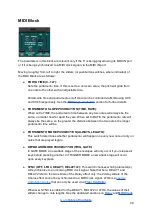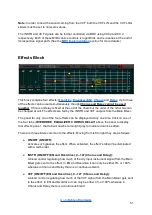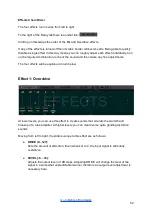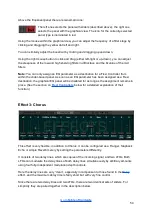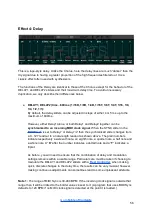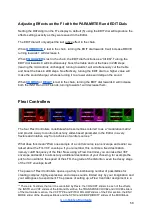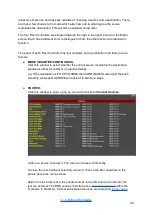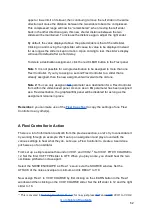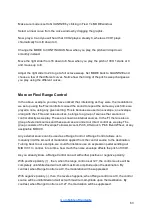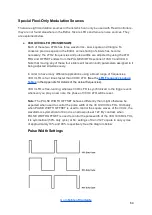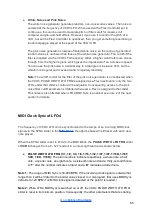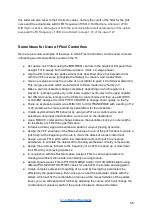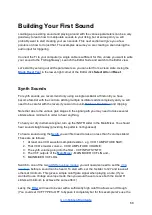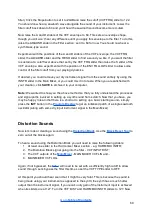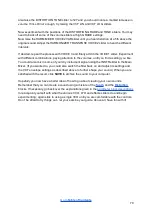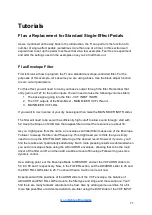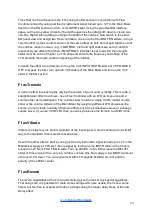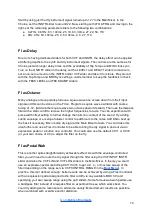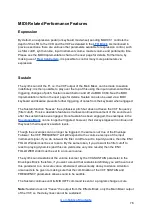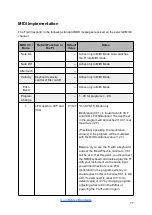
Make sure mode is set to QUANTIZE by clicking in Flexi 1’s MODE window.
Select a linear curve from the curve window by dragging the graphic.
Now, play a C and you will hear that VCO2 plays a steady C, whereas VCO1 plays
chromatically from E down to C.
Change the MODE to CONTINUOUS. Now when you play, the pitch will drop down
smoothly instead.
Move the right slider from 16 down to 8. Now when you play, the pitch of VCO1 starts at C
and moves up to E.
Adjust the right slider to 24 to get a full octave sweep. Set MODE back to QUANTIZE and
choose a few of the different curves. Notice how the timing of the pitch sweep changes as
you play using the different curves.
More on Flexi Range Control
In the above example, you may have noticed that, interesting as they were, the modulations
we set up using the Flexi controller caused the sound to repeat the same way each time we
played a note, using any given setting. This is because we used an envelope; an envelope,
along with the LFOs and noise sources, belongs to a group of sources that we cannot
control directly as we play. These are known as
internal
sources. In the FI, there is also a
group of
external
sources and these sources
are
under our direct control as we play. The
group consists of the Envelope Follower, Accent, Pitch, Aftertouch, Pitch Bend Wheel, or any
assignable MIDI CC.
Any external source can be used as a Range Control. A Range Control allows us to
manually limit the amount of modulation applied from the control source to the destination.
Turning back to our example, we could for instance use an expression pedal sending out
MIDI CC1 to control, in real time, how much the noise envelope affects the pitch of VCO1.
As you already know, a Range Control can act with either positive or negative polarity:
With
positive
polarity (+) , then, when the range control is at 127, the control source will be
completely uninhibited and will act with maximum amplitude upon the destination. By
contrast, when Range Control is at 0, the modulation will be suppressed.
With
negative
polarity (-), then, the reverse happens; when Range control is at 0, the control
source will be uninhibited and will act with maximum amplitude upon the destination. By
contrast, when Range Control is at 127, the modulation will be suppressed.
63
Содержание Future Impact v3
Страница 8: ...Top Panel Controls and Display Connections Go to Table of Contents 8...
Страница 84: ...Appendix Go to Table of Contents 84...
Страница 85: ...Algorithm Block Diagrams Go to Table of Contents 85...
Страница 86: ...Go to Table of Contents 86...
Страница 87: ...Go to Table of Contents 87...

